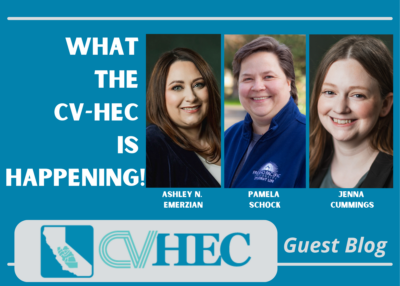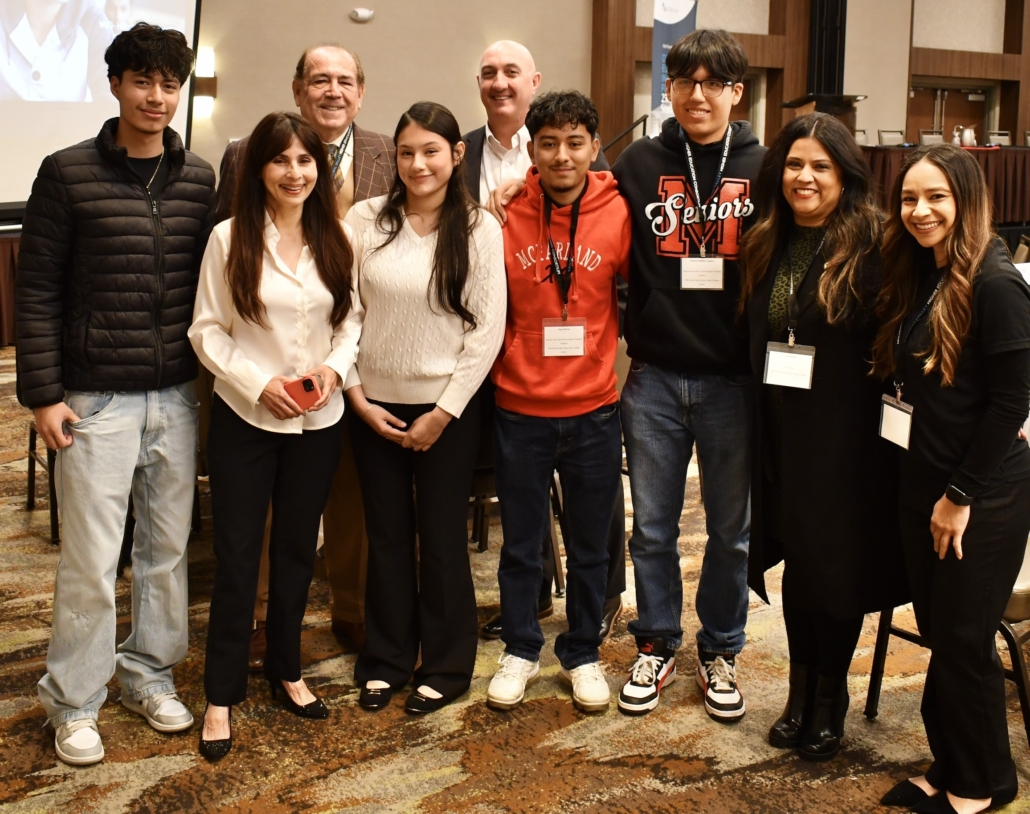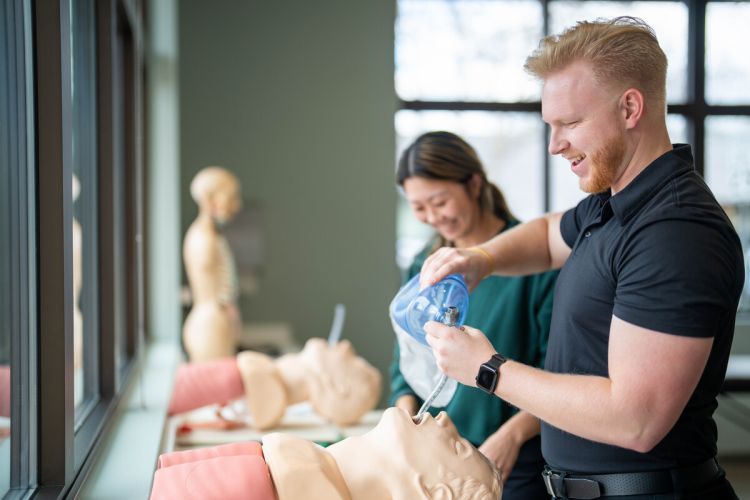 This edition of the “What the CV-HEC is Happening “ Blog for the Central Valley Higher Education Consortium February newsletter features Fresno attorney Ashley Emerzian of Emerzian Shankar Legal Inc. providing insights into the Stop Campus Hazing Act that was signed into law by President Biden in December, and the newly enhanced Clery Act that requires universities to include hazing data in their annual Clery Reports as well as publish a separate report which describes hazing violations. She reports that “staggering” statistics on higher education campus hazing have been widely reported in recent years and presents key areas of compliance that institutions of higher education will need to implement this year including deadlines and penalties such as loss of federal financial aid funding for Clery violations. She is joined in this blog by law partner Jenna Cummings and Pamela Schock of CVHEC-member Fresno Pacific University.
This edition of the “What the CV-HEC is Happening “ Blog for the Central Valley Higher Education Consortium February newsletter features Fresno attorney Ashley Emerzian of Emerzian Shankar Legal Inc. providing insights into the Stop Campus Hazing Act that was signed into law by President Biden in December, and the newly enhanced Clery Act that requires universities to include hazing data in their annual Clery Reports as well as publish a separate report which describes hazing violations. She reports that “staggering” statistics on higher education campus hazing have been widely reported in recent years and presents key areas of compliance that institutions of higher education will need to implement this year including deadlines and penalties such as loss of federal financial aid funding for Clery violations. She is joined in this blog by law partner Jenna Cummings and Pamela Schock of CVHEC-member Fresno Pacific University.
New year, new laws:
the Stop Campus Hazing Act is now in effect
By Ashley N. Emerzian, Esq. and Jenna Cummings, Esq.,
Emerzian Shankar Legal Inc.
and Pamela Schock, M.A., Assistant Dean of Student Development
Fresno Pacific University
In higher education, the number of laws and regulations impacting operations – everything from facilities to human resources and student affairs – is numerous and constantly changing. 2025 is trending towards more of the same.
One of the most recent new laws impacting the higher education sector is the new federal Stop Campus Hazing Act (“Act”). On December 11, 2024, the Senate passed the Stop Campus Hazing Act, which President Biden signed into law on December 24, 2024. The Act applies to all institutions of higher education in the United States that receive federal funding under Title IV.
Statistics on higher education campus hazing have been widely reported in recent years and are, in many ways, staggering. A prominent national study conducted in 2008 found that more than half of college students involved in a club, team, or other organization experience some form of campus hazing.[1] In athletics, the same study reported that 74% of students involved in varsity athletics programs experienced hazing.[2] This includes forced or coerced alcohol consumption, humiliation, isolation, sleep-deprivation, or sex acts – which were found by the study to be common across student groups, and across various types of higher education institutions.
Risks to higher education institutions of this behavior occurring on campus are also wide-ranging, including managing student harm and discipline resulting from the conduct, student attrition, negative press, and complex overlays with a variety of laws including Title IX, the Violence Against Women Act, and the Clery Act.
The newly enhanced Clery Act, which already required universities to collect and report data regarding crimes on or around campus, now requires universities to include hazing data in their annual Clery Reports. The Act also requires universities to publish a separate report which describes hazing violations. Key areas of compliance Universities will need to implement this year are addressed below.
Clery Report Requirement
Starting January 1, 2025, universities must collect data on hazing incidents reported to campus security or police, even if the incidents occur within student organizations that are not officially recognized by the university. Importantly, the Act defines a student organization as any organization that involves two or more members of the higher education institution. This presents unique jurisdictional considerations for universities to grapple with, particularly if they are typically used to enforcement of policies and procedures only for recognized organizations.
Additionally, universities must begin including this hazing data in their annual Clery Reports, starting with their 2025 Clery Report, which is due October 1, 2026. So, what is hazing?
The Act provides a comprehensive definition of hazing incidents which must be logged. The definition includes, but is not necessarily limited to, any “intentional, knowing, or reckless act” committed by one or more persons against another person, regardless of whether the victim participates willingly, that is part of an initiation or in affiliation with a student organization. Examples include causing, coercing, or otherwise inducing: whipping, beating, electric shock, placing harmful substances on one’s body; sleep deprivation, confinement in small spaces, extreme calisthenics; consumption of food, drug, alcohol or other substances; criminal acts; placing one in reasonable fear of bodily harm through threatening words or conduct; or sexual acts.
Publishing of Hazing Policies
Universities must begin publishing their hazing policies no later than June 24, 2025. These publications may be based on the university’s own definition of hazing instead of the act’s definition. However, deviations from the Acts definition should be considered carefully and in consultation with student affairs administration and legal counsel. The policies must include information on how to report hazing, how hazing is investigated, as well as state and local laws on hazing. The disclosure must also describe hazing prevention and awareness programs.
Campus Hazing Transparency Report
In addition to including hazing data in their annual Clery Report, institutions must begin publishing a separate report, called a Campus Hazing Transparency Report, by December 24, 2025. The report must include information about student organizations that have been found in violation of the institution’s hazing policy. Unlike the Clery Report, this report only needs to include information about recognized or established student organizations. The report must include specific details about the hazing violations, such as the names of the student organizations found responsible, descriptions of the violations, sanctions imposed, and whether alcohol and drugs were involved. Universities must exclude personally identifiable information of involved students from this report in order to comply with FERPA.
Universities’ first transparency report should include information dating back to July 1, 2025. Institutions must update the Report at least two (2) times a year with information regarding new hazing violations and keep each report publicly available on their website for five (5) years after publication.
Penalties
The Department of Education may impose civil monetary penalties for violations of the Clery Act where the institution is found to have “substantially misrepresented the number, location, or nature of the crimes required to be reported.” The current maximum penalty is $69,733 per violation; however, this maximum will be readjusted for inflation in 2025. Additionally, institutions can lose their federal financial aid funding for Clery violations.
As we look forward to 2025, it is recommended that universities begin coordinating their departments to begin implementation of these requirements, including the policy development work that will need to be completed this spring.
For more information, contact Ashley at aemerzian@eslegalinc.com
[1] National Study of Student Hazing, Hazing in View: Students at Risk, Dr. Elizabeth Allan and Dre. Mary Madden, 2006-2008.
[2] Id.
 Dr. Benjamin Duran, CVHEC executive director, recently announced the appointment bringing the former chancellor out of retirement seven months after stepping away from her 30-year career in higher education that also included the presidency of West Hills College-Lemoore (now Lemoore College) and service on the CVHEC board of directors.
Dr. Benjamin Duran, CVHEC executive director, recently announced the appointment bringing the former chancellor out of retirement seven months after stepping away from her 30-year career in higher education that also included the presidency of West Hills College-Lemoore (now Lemoore College) and service on the CVHEC board of directors.

 You will read about two convenings, the recent Central Valley Dual Enrollment Convening with 140 attendees and the Central Valley Math Task Force Convening scheduled for March 28. These two high-powered collaborations showcase the work our colleges and universities are doing in both the expansion of dual enrollment providing opportunities for high school students to take college courses while in high school, and addressing the challenging college level math courses that are essential for them to be successful in college.
You will read about two convenings, the recent Central Valley Dual Enrollment Convening with 140 attendees and the Central Valley Math Task Force Convening scheduled for March 28. These two high-powered collaborations showcase the work our colleges and universities are doing in both the expansion of dual enrollment providing opportunities for high school students to take college courses while in high school, and addressing the challenging college level math courses that are essential for them to be successful in college.
